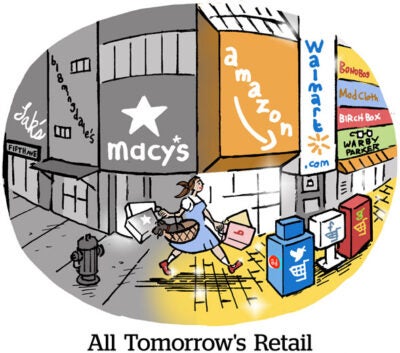Hey, readers!
Thanks for reading AdExchanger’s Commerce Media newsletter. I’m Senior Editor James Hercher, and this week I’m diving into the push for retail media standards.
Some form of retail media standardization seems inevitable at this point.
Retailers want it, marketers need it, agencies are dying without it, and programmatic tech companies will happily pull the weight of product development.
But it remains to be seen whether all that pent-up energy can accomplish the impossible – the creation of standards for campaigns that defy the notion of standardization.
Standardizing the unstandard
Earlier this week, the IAB and MRC released a much-awaited retail media standards proposal, which is open for public comment until October 13. Although industry working group proposals often deal in platitudes, the IAB, to its credit, tackles the complexity head-on.
For example, the IAB is proposing taxonomies for different kinds of stores (grocery, home improvement, convenience, department store, etc.) and “sub-polygons” or zones within stores that might be targeted differently, such as a deli, a pickup area for online purchases, a garden center or a section containing coolers.
Retailers gauge viewability metrics and impressions based on foot traffic in a given zone during a set period of time for the potential viewers of an ad, which can be drawn from location vendors that track foot traffic or from sensors in the store.
But there are so many ways that retailers can reach someone in and around a store, all of which might be bundled into a retail media “digital place-based” campaign (or DPB, because, after all, there are more than 17,000 possible three-letter acronyms in the English language, and ad tech never met a TLA it didn’t love).
Some stores have dynamic ads that appear on digital screens overlaid onto coolers or, say, a Coinstar machine.
Coinstar, which has a retail media biz itself, of course, might own a portion of the DPB ad inventory that serves to that machine, while retailers can claim a portion of the ad supply in their store. Retailers sign similar deals with companies like Volta, an electric vehicle charging station manufacturer, which has a retail media business, too, and offers retailers a cut of inventory to build stations in their parking lots.
Some of those ads might be video, some display or even text. In fact, sometimes it’s just sound, since retailers control radio and in-store music and sell those ad units as DPB media.
Chains like Albertsons and Best Buy are piloting ways to target an individual with a personalized deal offer displayed on a smart cart or in-store screen. Is that the same as a Coinstar ad claiming viewability from every passerby?
The answer depends on the particulars of every different retailer.
 Some chains tie groceries, gas and other sales together into a single loyalty program, which means people are there to buy gas and shop. Sometimes there’s a gas station within the geofenced vicinity of a grocery or convenience store, and that station could do retail media extensions with CPG video ads on its gas pumps.
Some chains tie groceries, gas and other sales together into a single loyalty program, which means people are there to buy gas and shop. Sometimes there’s a gas station within the geofenced vicinity of a grocery or convenience store, and that station could do retail media extensions with CPG video ads on its gas pumps.
Although the value proposition of these placements is very different, it’s very hard for an advertiser to tell the difference from a measurement perspective.
Who sets the bar?
There’s a parallel standardization dilemma happening in CTV Land.
Broadcasters, streaming services, YouTube and measurement arbiters like Nielsen simply can’t bridge the gaps between their media. Broadcasters say their professionally produced, 30-second commercials shouldn’t be counted the same way a skippable, six-second YouTube spot is counted. YouTube argues its ads are targeted, engaging and people actually watch them.
The big retailers will need to push for advertiser education and set a higher bar for measurement. Otherwise, their own inventory and data, which they consider so valuable, will fall into the same bucket as all sorts of shoddy placements.
Advertisers should question the ROAS of retail media, said Claire Wyatt, VP of business strategy and marketing science for the Albertsons Media Collective, speaking at the IAB Connected Commerce Summit in NYC on Wednesday.
For instance, some brands see up-and-down swings for their business in a grocery chain, while the retailer’s media network touts consistent $50 returns on ad spend or even higher.
“That’s a lie!” Wyatt said. “And I’m glad if standards will bring rigor.”

















